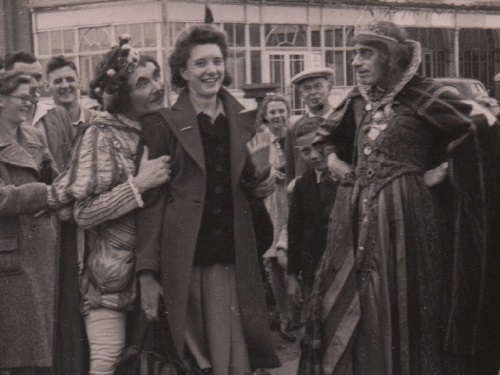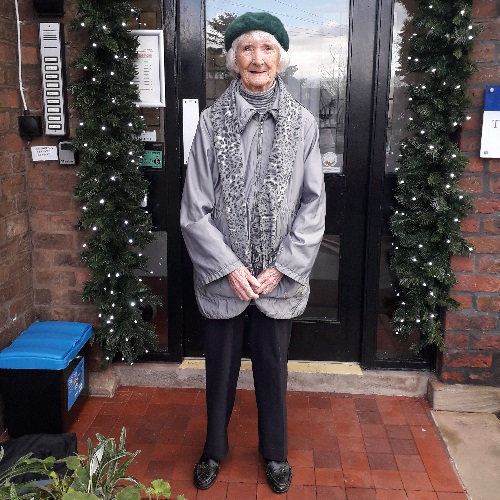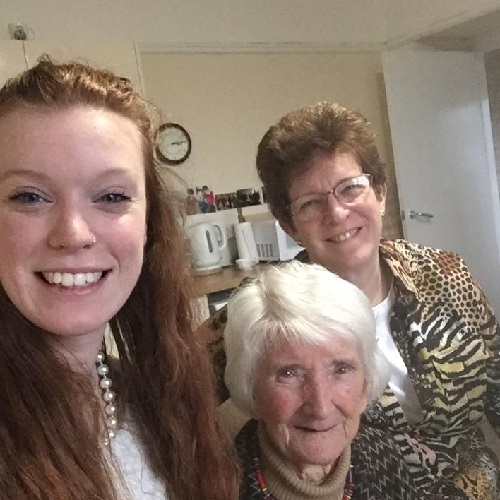
Here is a lineage of four strong women.
Linda has been doing some research into family history and this prompted my cousin Joe to share some old family photographs which he came across during a Covid clear out.
And it all started with this one really. In the centre is my grandmother, Gladys Evelyn, and either side is Linda and me. Judging by the two of us, I would reckon on the photograph having been taken around 1962 making me eight, Linda four and Gladys Evelyn in her late 60s, which goes to show what living through two world wars and being working class at that time will do to you.

The real eye opener was this little number. This is Gladys Evelyn again. It is around 1944 so she is just over 50 years old. She is in Rhyl on the North Wales coast spending a few days away from the Blitz-torn city that Liverpool had become by the end of the war. She is photographed with a group of what might most charitably be called strolling players.

We have this date and the location because Grace was also there. And here she is with the same strolling players. If she has the date correct, then she is around seventeen when this photograph was taken.

Jump forward some seventy-five years and here is Grace in her early 90s looking not too dissimilar to Gladys Evelyn in her late 60s.

And to complete the matriarchal lineage, here is the updated team. Grace in her early 90s, Linda in her early 60s and Mary entering her 20s.

Following on from four strong women, an opera about strong women seems apposite.
 I managed a second visit to the Royal Northern College of Music after this spring's excellent Pilgrim's Progress and a second opportunity of attending a production of Poulenc's Dialogues des Carmélites this calendar year. There are few operas which I would see twice so close together but, when Roland suggested that we attend this show, I had no hesitation in going along with the suggestion.
I managed a second visit to the Royal Northern College of Music after this spring's excellent Pilgrim's Progress and a second opportunity of attending a production of Poulenc's Dialogues des Carmélites this calendar year. There are few operas which I would see twice so close together but, when Roland suggested that we attend this show, I had no hesitation in going along with the suggestion.
The final quarter of an hour is one of the most harrowing auditory experiences in opera with the sound of the guillotine shockingly reproduced in the orchestra.
This time, unlike the Met's cinecast, the sound of the voices also dwindled until gone. Excellent work from Andrew Greenwood and the orchestra.
I was unclear as to the intended setting. We should be in Revolutionary France - guillotining nuns in this century is unlikely. Blanche de la Force's home environment was pretty much in period, the Carmelite convent was starkly timeless and the rioters were in modern dress. I've no problems with mismatching but the handling needed much more deft assurance.
It was a company show all round so I shall not single out individuals. It's rewarding to know that work like this continues and that the future of music-making is being fed by performers of high calibre.